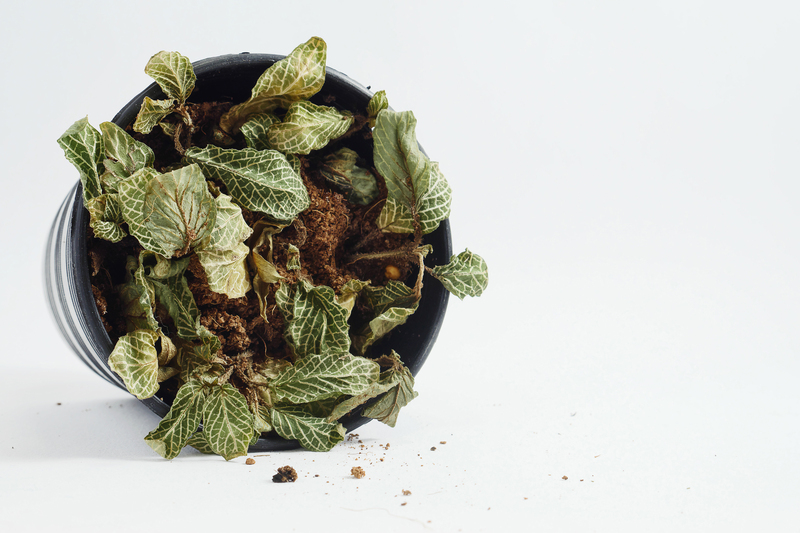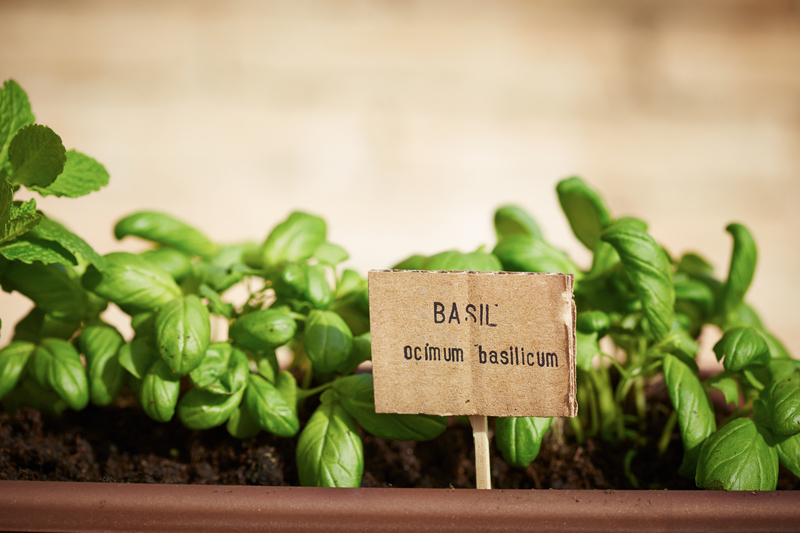How to Water and Feed Lawns to Resist Summer Drought
Is your lawn struggling against the relentless summer heat? Proper watering and feeding are crucial for lawns to withstand drought conditions and remain vibrant through the hottest months. In this comprehensive guide, we'll explore the best practices to water and feed your lawn for maximum drought resistance, ensuring your grass stays healthy, lush, and green when it matters most.
Why Summer Droughts Are Challenging for Lawns
When the summer sun intensifies, lawns often face prolonged periods of dry weather. Drought stress can turn lush lawns brown, invite weeds, and make grass more susceptible to pests and diseases. Understanding the effects of summer drought on lawns will help you make effective care decisions for your yard.
Impact of Drought on Lawn Health
- Dehydration: Grass roots struggle to access adequate water, leading to wilting and browning.
- Soil Compaction: Dry soil hardens, making it even more difficult for water to penetrate and reach the roots.
- Growth Slowdown: Lawns enter a dormant state, pausing growth to conserve water.
- Increased Weed and Pest Pressure: Weeds and pests may take advantage of weakened grass.
Implementing an effective watering and feeding routine is crucial for a healthy, resilient lawn.
How to Water Lawns During Drought
A well-watered lawn is more resilient against summer drought. However, simply increasing water isn't always the answer. The key lies in smart watering techniques that encourage deep root growth while conserving water.
Best Time to Water Lawns in Hot Weather
- Early Morning: Watering lawns in the early morning (between 4 am and 9 am) reduces evaporation and gives grass time to absorb moisture.
- Late Evening: If you can't water in the morning, late evening is acceptable--but be cautious, as prolonged moisture can encourage some turf diseases.
How Often Should You Water Lawns During Drought?
-
Water Less Frequently, But Deeply:
- Deep watering encourages roots to grow further into the soil in search of moisture, making grass more drought-tolerant.
- Aim for 1-1.5 inches of water per week, delivered over one or two sessions.
-
Adjust for Soil Type:
- Clay soils: Retain water longer; reduce watering frequency.
- Sandy soils: Drain quickly; may need shorter, more frequent watering.
How to Measure Water Application
To ensure proper watering:
- Place a rain gauge or empty tuna can on your lawn.
- Run your sprinkler until you've accumulated 1 inch of water.
- This method helps guarantee even and sufficient water delivery to the root zone.
Smart Watering Tips for Drought-Resistant Lawns
- Water Early and Deep: Maximize root growth and minimize water waste.
- Avoid Shallow Watering: Leads to weak, shallow roots vulnerable to drought.
- Split-Session Watering: Heavy clay soils benefit from splitting watering into two sessions to avoid runoff.
- Use Mulching Mowers: Grass clippings help retain soil moisture.
- Install a Smart Irrigation Controller: Adjusts watering based on weather to reduce waste.
Recognizing Signs of Drought Stress in Lawns
Even with the best watering techniques, it's important to learn the signs your lawn needs more water:
- Grass blades fold or wilt instead of standing upright.
- Footprints remain visible long after you walk on the grass.
- Color dulls from vibrant green to grayish-blue or light brown.
Feeding Lawns to Enhance Drought Resistance
Proper fertilization is as important as watering for summer drought tolerance. Giving your lawn the right nutrients helps grass develop deep roots, repair from damage, and stay greener longer. Balanced lawn feeding also improves soil structure, organic matter, and moisture retention.
What to Feed Lawns During Summer Drought
- Slow-Release Fertilizer: Provides steady nutrients without burning grass in hot conditions.
- Organic Matter: Compost, well-rotted manure, or natural lawn food boost soil health.
- Potassium (K): Helps grass blades and roots withstand heat and drought stress.
- Proteinated Iron and Micronutrients: Maintain that coveted green color and resilience.
Avoid high-nitrogen fertilizers during extreme heat, as excessive growth can use up more water and worsen drought stress.
When and How to Fertilize Drought-Prone Lawns
- Early Summer Feeding: Apply a slow-release, balanced fertilizer in late spring or early summer before peak drought.
- Light Feeding During Drought: If you must, use half-strength organic fertilizer and water in thoroughly.
- Avoid Heavy Feeding: Fertilizing during intense drought or high heat can scorch grass. Wait until rains resume.
Top Lawn Feeds for Drought Resistance
- Compost - Boosts organic matter and soil microbes.
- Milorganite or other organic slow-release fertilizers.
- Potassium-rich lawn foods - Look for NPK ratios with a high second or third number (e.g., 5-5-10 or 3-0-20).
- Soybean meal, alfalfa pellets, or other natural amendments.
Feeding Tips to Build Drought-Tolerant Lawns
- Feed Cool-Season Grasses in Fall: Boosts root growth and drought readiness for the next summer.
- Mulch Grass Clippings: Returns nutrients and organic matter to the soil, helping moisture retention.
- Test Your Soil: Amend with lime or gypsum if your soil needs pH or structure adjustment.

Lawn Care Practices to Reduce Summer Water Needs
Beyond watering and feeding, your overall lawn care regime can make a big difference in fighting summer drought. Consider these practices to help your lawn resist heat and conserve moisture.
Raise Your Mower Height
- Keep grass blades longer (3-4 inches) to provide shade for the soil and reduce evaporation.
- Longer blades mean deeper roots and stronger drought resistance.
- Avoid scalping your lawn--it weakens grass and exposes soil to sun.
Overseed with Drought-Resistant Grasses
- Introduce drought-tolerant grass seed varieties such as tall fescue, Bermuda, or buffalo grass for long-term resilience.
- Blend in these grasses when seeding or overseeding bare areas.
Aerate and Top-Dress Your Lawn
- Aerate in spring or fall to relieve compaction and help water penetrate deeper.
- Top-dress with a thin layer of compost to improve water and nutrient retention.
Control Weeds and Reduce Thatch
- Keep weeds out so they don't compete for precious moisture.
- Dethatch if the layer is over 1/2 inch to improve water movement to grassroots.
Mulch and Water New Sod or Seed Carefully
- New grass should be watered more often to develop strong roots, but never allow water to pool or run off.
- Mulch bare spots with straw or biodegradable mat to hold in moisture.
How to Conserve Water While Keeping Lawns Healthy
Water conservation is increasingly important in many regions. You don't need to waste water to have a green, drought-resistant lawn! Try these sustainability tips:
- Capture Rainwater: Use rain barrels or cisterns to irrigate your lawn naturally.
- Fix Leaks and adjust sprinklers for targeted, even coverage.
- Install Drip Lines for new lawns or garden edges to deliver water precisely.
- Choose Native or Region-Adapted Grasses
Common Mistakes That Increase Lawn Drought Stress
- Shallow, Frequent Watering: Leads to shallow-rooted, weak lawns that dry out faster.
- High-Nitrogen Fertilizers During Heat: Promote thirsty, tender growth prone to burning.
- Mowing Too Short: Eliminates grass's natural protective shading.
- Ignoring Soil Health: Compacted or poor soil can't retain water or nutrients effectively.
- Watering at Midday: Most of the water evaporates before it reaches the roots.

Frequently Asked Questions: Lawn Drought Resistance
Should I stop watering my lawn during a water ban?
If restricted, let your grass go dormant; most established lawns can survive 3-4 weeks without water and will recover when rain returns. Water sparingly only to prevent irreparable damage (about 1/4 inch every 2-3 weeks).
Can I fertilize my lawn during drought?
It's better to wait until cooler, wetter conditions. If you must fertilize, use an organic or gentle slow-release product at half strength, and water it in deeply.
How do I revive a lawn after a drought?
Re-water gradually when drought ends, aerate compacted soil, reseed bare patches with drought-resistant grasses, and feed with a recovery fertilizer.
What is the best grass for drought-resistant lawns?
Tall fescue, buffalo grass, Bermuda grass, zoysia, and fine fescues are among the most drought-tolerant lawn varieties.
Conclusion: Building a Resilient Green Lawn Through Smart Watering & Feeding
Summer heat doesn't have to spell disaster for your lawn. Building drought resistance starts with regular deep watering, smart feeding, proper mowing, and overall soil health. By understanding your grass type, adjusting your care routine, and choosing the right lawn products, you can enjoy a greener, thicker, and more resilient lawn year after year--even during the toughest summer droughts.
Now that you know how to water and feed lawns to resist summer drought, put these tips into action and watch your grass thrive--no matter how hot and dry the weather gets!
- Water deeply and infrequently for deep roots.
- Use slow-release, potassium-rich fertilizers.
- Maintain longer mowing heights and mulch clippings.
- Improve soil health with compost and aeration.
- Choose drought-tolerant and native grasses for best results.
Take these steps and enjoy a healthy, green lawn that laughs in the face of summer drought!